BondTime

BondTime is an innovative mobile application designed to support the critical brain development of children aged 0 to 5 years while simultaneously strengthening the emotional bond between parent and child. Grounded in early childhood neuroscience and developmental psychology, the app delivers personalized, screen-free activity recommendations tailored to a child’s age, developmental stage, and family environment.
The first five years of life are foundational for cognitive, emotional, and social development. BondTime leverages this window by providing parents with daily guided activities—such as sensory play, storytelling, physical interaction, and emotional expression—that enhance neural connections and promote secure attachment. Activities are backed by research and crafted with input from pediatricians, child psychologists, and educators.
Key features include multilingual voice guidance, streak tracking to encourage consistency, and offline functionality to support low-connectivity environments. A built-in reward system motivates both child and parent engagement, while periodic developmental assessments help adapt content dynamically. BondTime also fosters inclusivity by addressing the needs of neurodiverse children and offering culturally sensitive suggestions.
By integrating artificial intelligence and real-time feedback, BondTime not only assists busy caregivers with meaningful routines but also builds a stronger, more connected foundation for lifelong learning and emotional well-being. The project represents a vital step toward bridging technology with human-centered parenting during the most formative years of life.
PredicTea
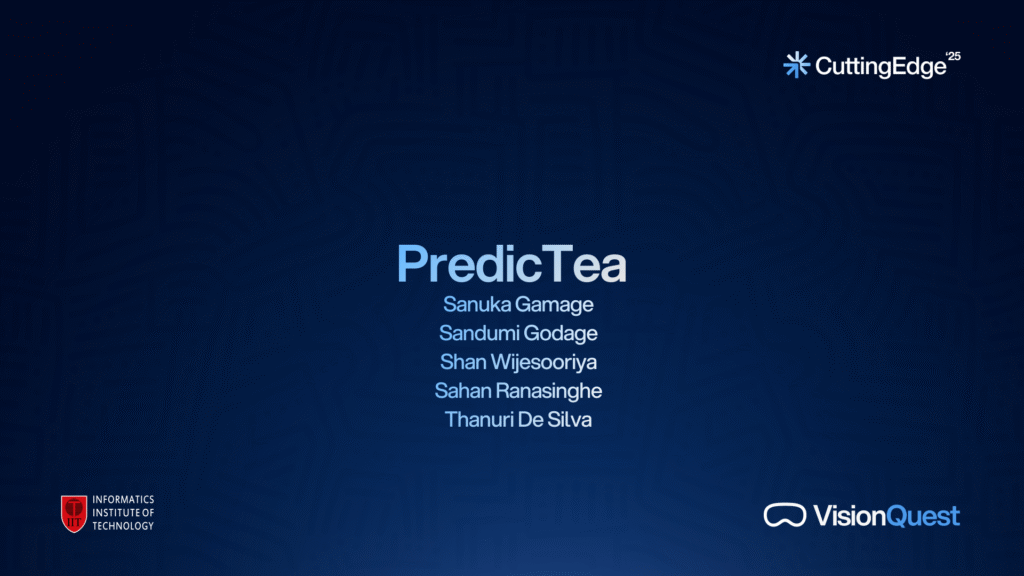
Due to a lack of timely market data and a dependence on extinct forecasting methods, the Sri Lankan tea industry faces difficulties in effectively anticipating tea prices before harvest. This leads to uncertain pricing, which affects exporters’ profitability and farmers’ financial stability. To build a system to solve this problem, requires careful consideration of several key factors. Which include, global demand and supply, local weather patterns and currency exchange rate.
PredicTea is an AI powered tool designed to forecast tea prices using data-driven insights. It analyzes historical trends, market conditions, and external factors like currency fluctuations and weather indicators to provide accurate price predictions. The goal is to help tea industry stakeholders, such as farmers, traders, and exporters, make informed decisions about production, sales, and negotiate better deals by anticipating market fluctuations.
PredicTea is carefully designed using modern technologies to ensure accuracy, efficiency, and a seamless user experience. At its core, it is built with technologies like React, NodeJS, MongoDB and Python providing a smooth and interactive interface where users can explore tea price forecasts, access customizable reports, and analyze price trend charts. Every element of the interface is designed with simplicity in mind, allowing tea exporters and brokers to access insights effortlessly.
TrueMortem
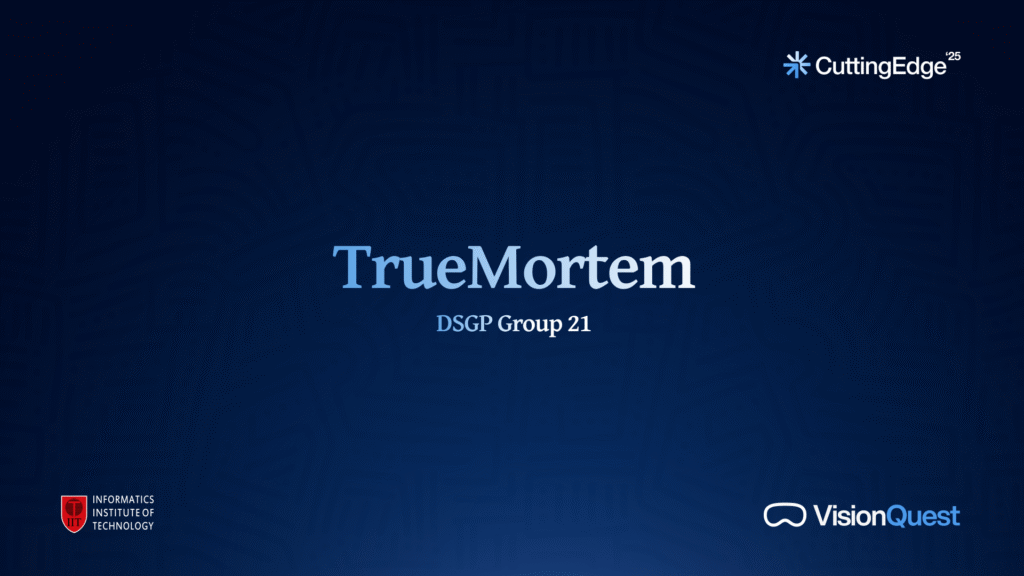
TrueMortem is an AI-driven cause-of-death prediction and analysis system focused on identifying whether a person’s death was due to heart-related conditions. The project was developed in response to the growing need for data-driven support tools in forensic pathology, particularly in Sri Lanka, where standardized digital postmortem analysis is lacking. TrueMortem utilizes two distinct models trained on different data sources: a structured postmortem dataset manually curated from Kurunegala General Hospital, and a verbal autopsy dataset obtained from the PHMRC Gold Standard VA database.
The postmortem model processes medical findings such as internal organ damage, external injuries, and demographics using machine learning algorithms. After experimenting with various models, Random Forest was selected for its superior performance, interpretability, and ability to handle missing data. The verbal autopsy model, designed to work with questionnaire-based data, uses an ensemble of Random Forest, SVM and LightGBM for improved accuracy.
The system features a React-based frontend, a FastAPI backend, and a RASA-powered chatbot integrated with an LLM to answer user queries. An interactive dashboard presents prediction results, confidence scores, and feature importance using SHAP values for transparency.
TrueMortem ensures data security, complies with ethical standards, and addresses legal requirements for sensitive medical data. While currently focused on heart-related deaths, the system is modular and scalable, paving the way for future expansion to other causes of death. It stands as Sri Lanka’s first AI-powered mortality analysis tool, supporting forensic experts and public health officials in making informed, evidence-based decisions.
Project KYAN – Robot Companion for Self-Studying
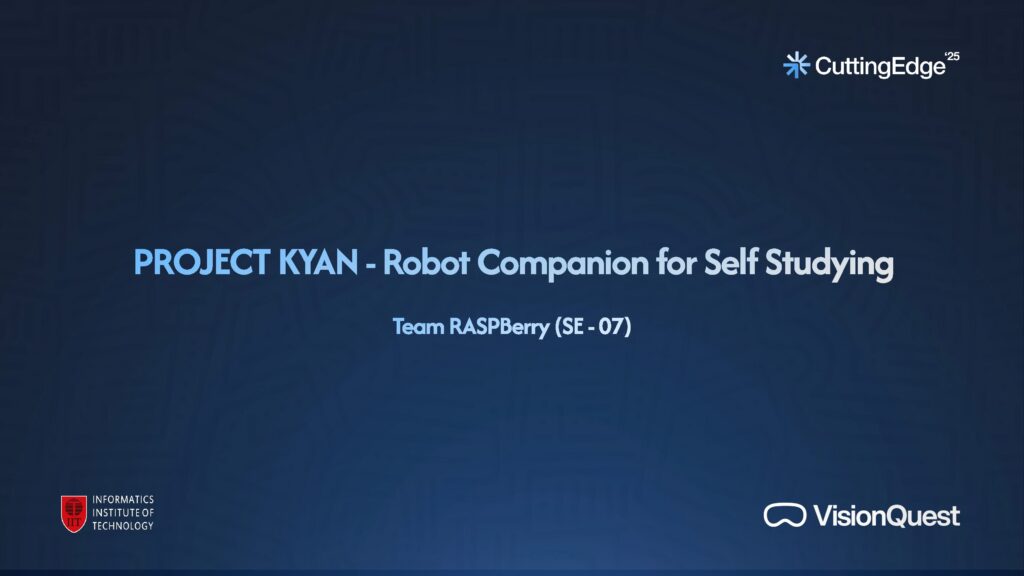
Project Kyan is a smart, student-focused study companion created to make learning more engaging, organized, and effective. Designed especially for students who often study alone or struggle with motivation, Kyan brings a friendly and supportive presence to any study environment. It offers gentle reminders, personalized encouragement, and interactive features that help build consistency and focus—turning study time into something students actually look forward to. Whether it’s tracking progress, celebrating milestones, or offering tips to stay on track, Kyan is there every step of the way. By combining the feel of a personal mentor with the convenience of modern technology, Kyan helps students stay committed to their academic goals in a fun and non-intrusive way. It encourages healthy study habits, reduces procrastination, and adds a sense of companionship during long or challenging study sessions. What makes Kyan truly special is its student-centered design—every feature is built to support real learning experiences, not just manage time. It’s ideal for anyone looking to improve their study routine without the pressure of strict schedules or overwhelming systems. Whether used at home, in the library, or even in group settings, Kyan adapts to the learner’s pace and style, making it an ideal partner for both short-term assignments and long-term academic success. With Project Kyan, studying becomes less of a task and more of a journey—motivated, mindful, and supported every step of the way.
A Continual Learning Mechanism for Early Brahmi Inscription Translation with Deep Learning

An automated system capable of recognizing and translating early Brahmi inscriptions from Sri Lanka into modern Sinhala by employing a CNN-based (YOLO) character recognition model and a transformer-based NMT model. A critical component of the system will be a continuous learning mechanism that allows the model to adapt incrementally as new inscriptions are discovered, thus avoiding the need for complete retraining with each new data point.
Research Article Relevancy Evaluation Automation System for Generative AI
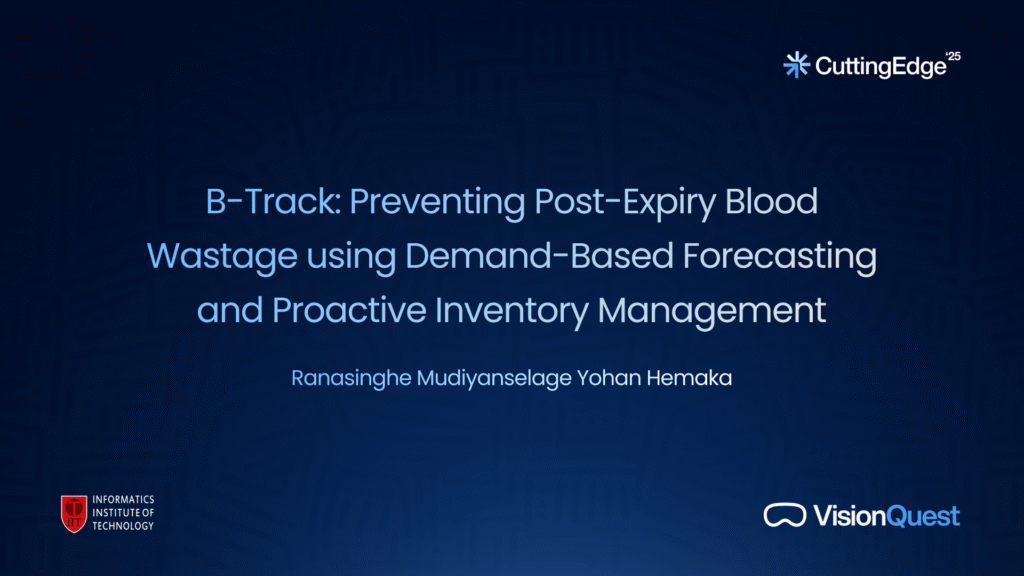
The annual production of research articles is increasing rapidly. In the field of article review it is a crucial part of content validation and quality assurance. Traditionally, this process is manual, time-consuming, and often subject to human biases and inconsistencies. This Research Article Relevancy Evaluation Automation System for Generative AI aims to develop an AI-driven system that can evaluate relevancy on specific domain and review articles to provide relevancy score, feedback, and grammar checking.
B-Track: Preventing Post-Expiry Blood Wastage in Sri Lanka using Demand-Based Forecasting and Proactive Inventory Management
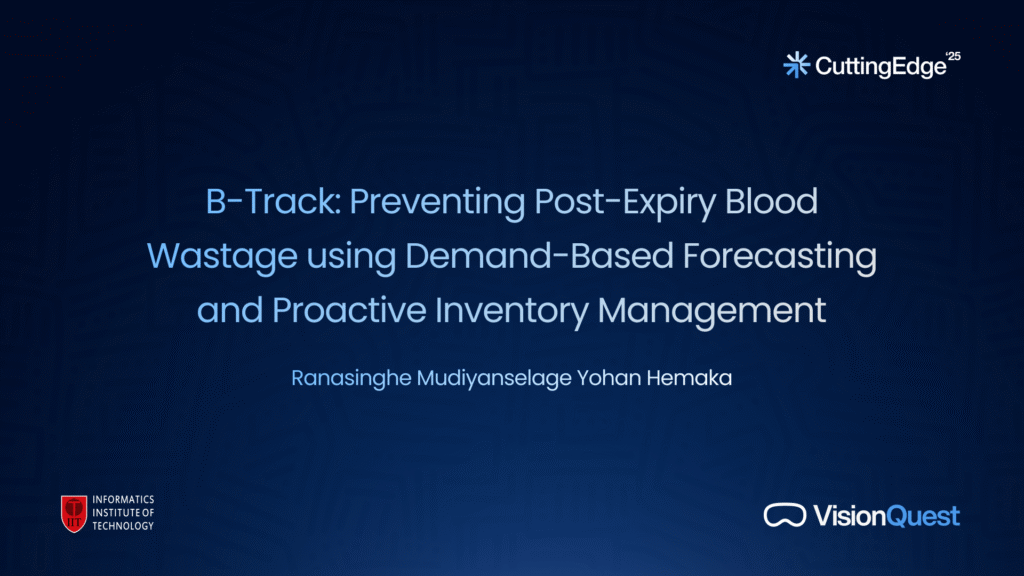
Post-expiry blood wastage presents a substantial global healthcare challenge. Blood is an essential and irreplaceable healthcare resource, used for surgeries, emergency care, and chronic illness management. Despite technological breakthroughs, blood cannot be artificially generated and must be donated by volunteer donors, whose availability is intrinsically unpredictable. This variable donor availability, along with the limited shelf life of blood, makes it an essential resource that must be carefully managed – amidst the fluctuating blood demand. However, inefficiencies in demand forecasting, inventory optimization, and communication continue to contribute to substantial discards of this life-saving resource.
To address these inefficiencies, the project B-Track introduces a data-driven solution using historical data (2020–2024) from Sri Lanka’s National Blood Transfusion Service, supplemented by expert interviews. The proposed solution is a multivariate Long Short-Term Memory (LSTM) Recurrent Neural Network (RNN) model integrated into a platform that supports proactive inventory management. By analyzing complex trends, B-Track provides more accurate demand forecasting, while enabling timely decision-making through automated near-expiry alerts and optimized redistribution mechanisms. This integrated system aligns blood collection with anticipated demand, minimizing expiry-related wastage.
Key findings demonstrate that the developed multivariate LSTM forecasting model achieved a demand prediction accuracy of 63.79%, outperforming both SARIMA (42.17%) and Univariate LSTM (50.21%) models. System testing further validated the effectiveness of real-time inventory tracking, alerts, and redistribution protocols. This research contributes a scalable model for enhancing blood bank sustainability by merging machine learning-driven forecasting with dynamic inventory optimization, paving the way for a more efficient and equitable blood supply chain.
AnoLNN – A Generalisable Approach for Explainable Video Anomaly Detection with Liquid Time-Constant Networks
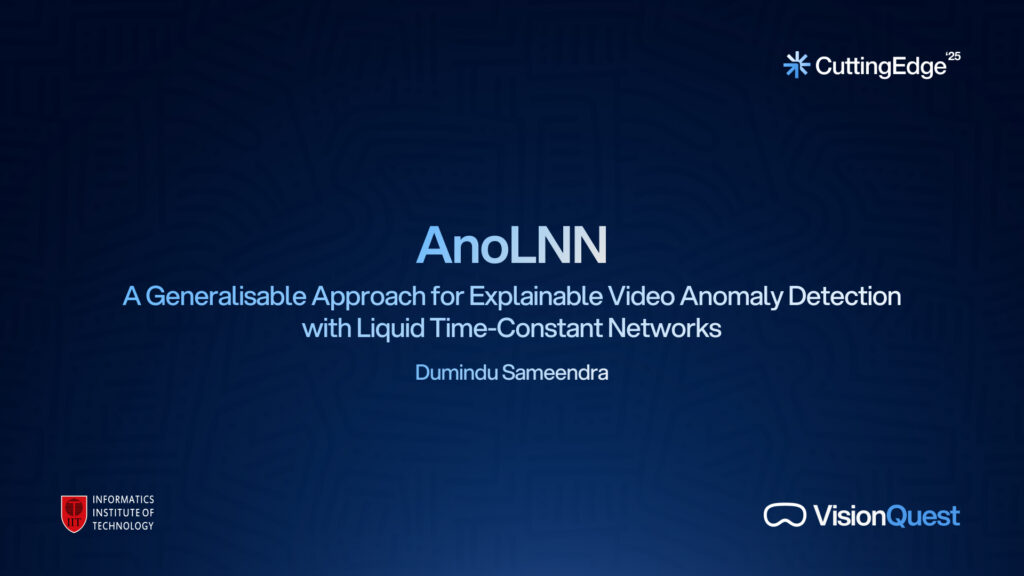
AnoLNN is a novel, generalisable, and explainable framework for Video Anomaly Detection, designed to address key challenges in the field such as limited generalisability, high computational costs, data imbalance, and lack of interpretability. The system integrates a hybrid architecture that combines Convolutional Neural Networks for spatial feature extraction with Liquid Time-Constant Networks for capturing dynamic temporal dependencies. The model learns from overlapping video sequences and employs a class-balanced focal loss function to handle the natural class imbalance common in VAD datasets. Anomalies are detected by evaluating the confidence of sequence-level predictions, using F1 score-based threshold optimisation. To enhance transparency and trust, the system integrates Grad-CAM and Integrated Gradients, enabling the identification of critical spatial and temporal features contributing to anomaly predictions. Evaluated on the UCF-Crime dataset, AnoLNN achieved strong performance with an AU-ROC of 0.9787 and PR-AUC of 0.9568 for Road Accidents, as well as an average AU-ROC of 0.9090 across multiple anomaly types. These results highlight its state-of-the-art performance and adaptability across diverse scenarios. The explainability features built into the system support its safe deployment in real-world applications such as surveillance and autonomous vehicles.
Developing a Low-Cost Air Pollution Monitoring System for Colombo
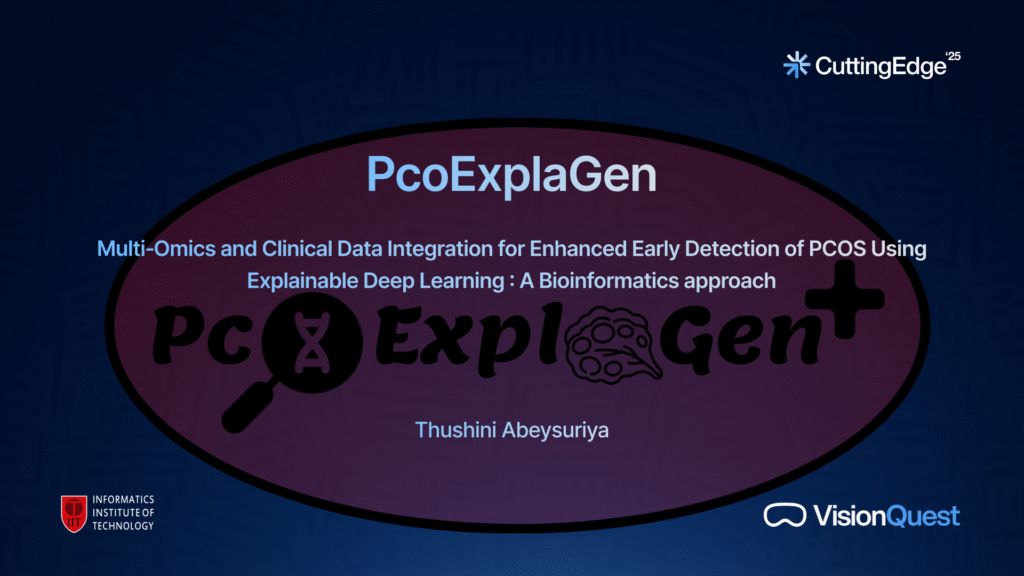
Air pollution poses a significant threat to public health, particularly in urban environments of
developing nations where monitoring infrastructure is often sparse or outdated. This thesis
presents the design and deployment of a low-cost, real-time air quality monitoring system for Colombo, Sri Lanka. Utilizing a suite of low-cost sensors ranging from particulate matter detectors (SDS011) to gas sensors (MQ and MiCS series), GPS modules, and environmental sensors (DHT22, BMP180) the system captures a wide array of environmental parameters including PM2.5, PM10, CO, NO₂, SO₂, temperature, humidity, and pressure. Data is collected via Raspberry Pi-based architecture and uploaded to Google BigQuery, where it undergoes statistical preprocessing and machine learning-based anomaly detection using Autoencoders, Gaussian Mixture Models, and Isolation Forests. Visualizations are delivered through interactive dashboards in Looker Studio, providing public access and decision-making support for authorities. The proposed system aims to bridge the gap between data scarcity and high spatial resolution needs in urban air monitoring. The results indicate that, when calibrated and combined with intelligent preprocessing, low-cost sensors can offer reliable environmental insights, thus supporting data-driven governance and community health awareness. The project adheres to strict ethical, legal, and data security
standards to ensure responsible deployment and use.
VoiceBlockly: Voice Code Generation in Block-Based Programming Using a Novel Multi-Agent Framework
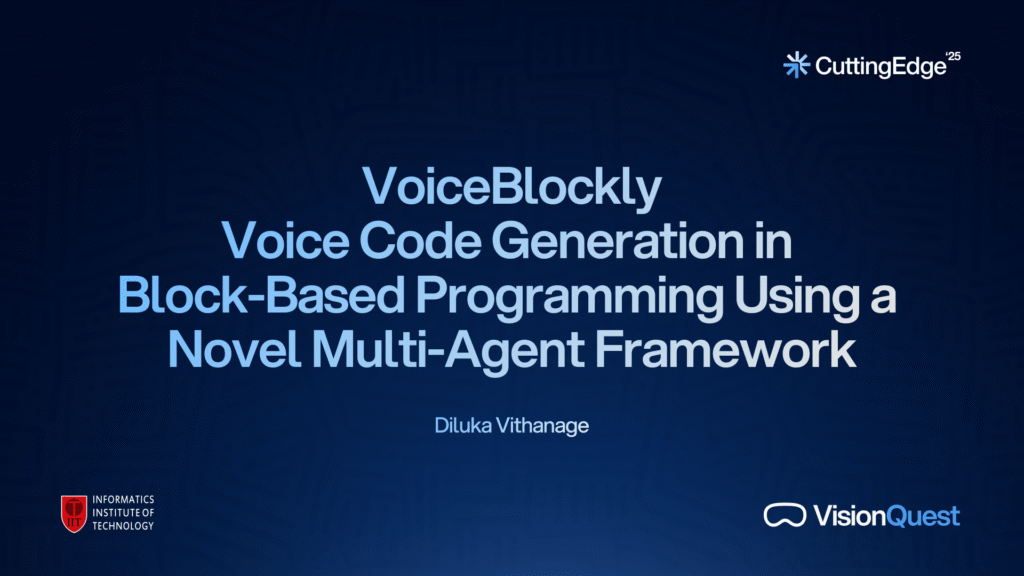
Block-based programming (BBP) has proven effective in teaching programming concepts, offering a visual and more intuitive approach than traditional text-based programming. However, accessibility in BBP remains an underexplored area, particularly for students with disabilities who may benefit from alternative input methods, such as voice commands. This project aims to bridge this accessibility gap by integrating natural language processing (NLP) capabilities into a BBP interface, enabling users to generate programming blocks through voice commands.
To achieve effective voice to block code generation, the project employs a novel multi-agent (MA) framework that integrates several large language models (LLM) working together. Each model is designed to interpret user commands and generate corresponding block syntax. A novel aggregation algorithm based on uncertainty quantification (UQ) is introduced to combine outputs from multiple agents, ensuring the accuracy and validity of the generated blocks. This approach enables the system to produce high quality output by leveraging the collective strengths of multiple agents.
The prototype demonstrates that the BBP environment effectively translates NL input into accurately rendered code blocks within the interface. Testing and evaluation results indicate that the proposed MA framework outperforms the leading state-of-the-art (SOTA) MA framework by 6% in programming tasks, achieving a Pass@1 score of 75% on the HumanEval dataset. Furthermore, it surpasses the same MA framework by 6% in general domain tasks, attaining an accuracy of 65% on the TruthfulQA dataset.
